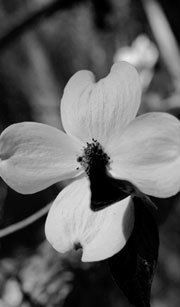 |
||
 |
||

 |
• HOME • GENERAL STORE • NATURAL HERITAGE • HISTORY, CULTURE & CRAFTSMANSHIP |
||||
|
Natural Heritage
• Trees & Shrubs of the Ozarks |
|||||
| Trees & Shrubs Index • Oak • Hickory • Walnut • Catalpa • Loblolly Pine • Red cedar • Elderberry • Sumac • Sassafras • Persimmon • Osage-orange • Mulberry • Witch Hazel • Sarvisberry • Dogwood • Redbud • Crape Myrtle • Mimosa Natural Heritage Index • Fishing • Hunting • Camping • Conservation • Bass Pro Blog • Hills & Hollows • Rivers & Lakes • Springs • Caves • Rocks & Fossils • Trees & Shrubs • Plants & Herbs • Hill Critters • Flyin' Critters • Water Critters • Snakes & Such • Forgotten Critters |
|||

Common Crape Myrtle, (Lagerstroemia indica) has been part North American horticulture for so long, it might well be regarded as native.
Nonetheless, this unremarkable shrub with green waxy leaves — easy to dismiss until it bursts into bloom in early summer, covered with bright pink-crimson blossoms — is native to Asia.
The species was introduced to the Eastern Seaboard prior to 1800.
Many cultivars exist after 300 years of breeding and naturalization. Here in the Ozarks, the crape myrtle is a herald of early summer with a long history of landscaping.
In Taney County, Callista O’Neill, sister of artist and celebrity Rose O’Neill, planted crape myrtle about the old, rambling Bonniebrook Mansion near Walnut Shade.
As the O’Neill fortune failed, the untended myrtle poignantly obscured the old mansion as well as the family graves beyond the brook.
Yet another example of the interaction between man and nature, plant and animal.
Lagerstroemia indica photo plates
All photo credits: J. Heston. SOTO © Archive. 08/03/09 (Hollister, Missouri).
— by Joshua Heston
February 15, 2010


